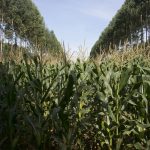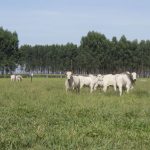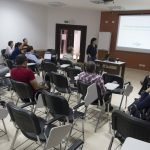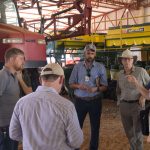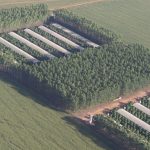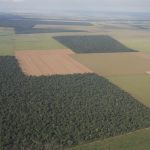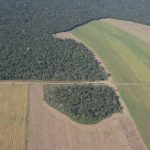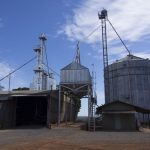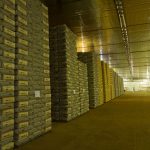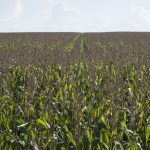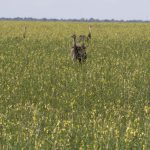Between April and June, 2017, we conducted fieldwork in the state of Mato Grosso (MT). We interviewed farmers and producers’ associations, traders and soybean industry, government and civil society. We used a semi-structured questionnaire and interviews were recorded in audio file. A mental model for each interview was also developed. We focused on production management strategies, the connection of producers with the market (e.g., market and credit access), historical transformations of the production system, risks and generational succession.
Land occupation: Mato Grosso was the stage of colonization projects since the 1940s as a Federal Government attempt to integrate the Central-West and northern (i.e., Amazon) Brazilian territories. The idea was to connect regional and national economies having the state as a provider of agricultural products supported by the industrialization of the southeast (e.g., state of São Paulo). Also, the initiative would repeal international interests in the Amazon. In the 1970’s, the colonization process led by private companies was intensified, a process mainly undertaken by Federal Government agencies since the 1940s with the aim of creating national agricultural colonies. Private companies, predominantly from Rio Grande Sul, were attracted by the opportunity of purchasing large extensions of land by lower prices. The State is partly located in the Amazon, partly in the Cerrado and a small part in the Pantanal biomes. The states of Mato Grosso (MT), Pará (PA), and Rondônia (RO), have shown the highest rates of deforestation in the Amazon due to agropastoral activities since the 1960s. According to the elder producers, the State’s portion within the Cerrado biome was easier to clear (i.e., deforest) since its native vegetation tends to be thinner and less dense than Amazon forests. From the producers’ perspective, this was one more reason to convert Cerrado areas into agricultural lands.
Soybean: Soybean cultivation in Mato Grosso started in the 1970s and in 1975 the production area was of 194 thousand hectares (3.5% of the national soybean planted area) with a productivity of 1,403 kg/ha. At that time, soybean varieties were based on USA genetic materials adapted to southern Brazil, not for the tropical climatic conditions and lower latitudes of the Cerrado biome. After the implementation of Embrapa Soja in 1975, and with the support of federal programs to incentivize (i.e., through financial aid) the agricultural development of the State and Central Brazil, such as PRODOESTE (1972), POLOCENTRO (1975) and PRODECER (1975), and by the efforts to make feasible the soybean production in tropical soils led by Embrapa Cerrados, centered Mato Grosso as a soybean player since the 1980s. In 1980, Embrapa Soja launched the “DOKO” variety, the first Brazilian soybean for cultivation in the Cerrado biome. In the same year, the variety “Tropical” was launched and indicated for Mato Grosso and lower latitudes. Controlling the period of maturity of soybean (i.e., increasing the growing period before blooming, which increased productivity), was a breakthrough and made Embrapa Soja a major player in the soybean expansion. From that time, many genetic improvements were made to produce varieties suitable for various regions of the country. In 1992, soybean productivity in Mato Grosso reached 2,505 kg/ha (an increase of 75% compared to 1975) and 1.459 million hectares (15% of the national soybean planted area). Given the results in the beginning of the 1990s, soybean producers from the south migrated to the State searching for opportunities to expand production by increasing farming-scale. Technological changes associated with soybean production include the adoption of the non-tillage system in the 1990s. This technique increased the need to plant a green cover to protect soils, which opened the opportunity to plant crops that were also profitable, such as maize as a second-crop after soybean. At the beginning of the non-tillage system in Mato Grosso, producers started by planting millet as second crop. The increased capacity of soybean production in Mato Grosso during the 1990s led the State to become the largest producer in the country in 2000 (8.474 thousand tons), a position also held over the following years. In 2016, the State produced 27.2% of the national soybean production (i.e., 26.277 million tons) on 9.147 million hectares (27.4% of the national soybean planted area).

